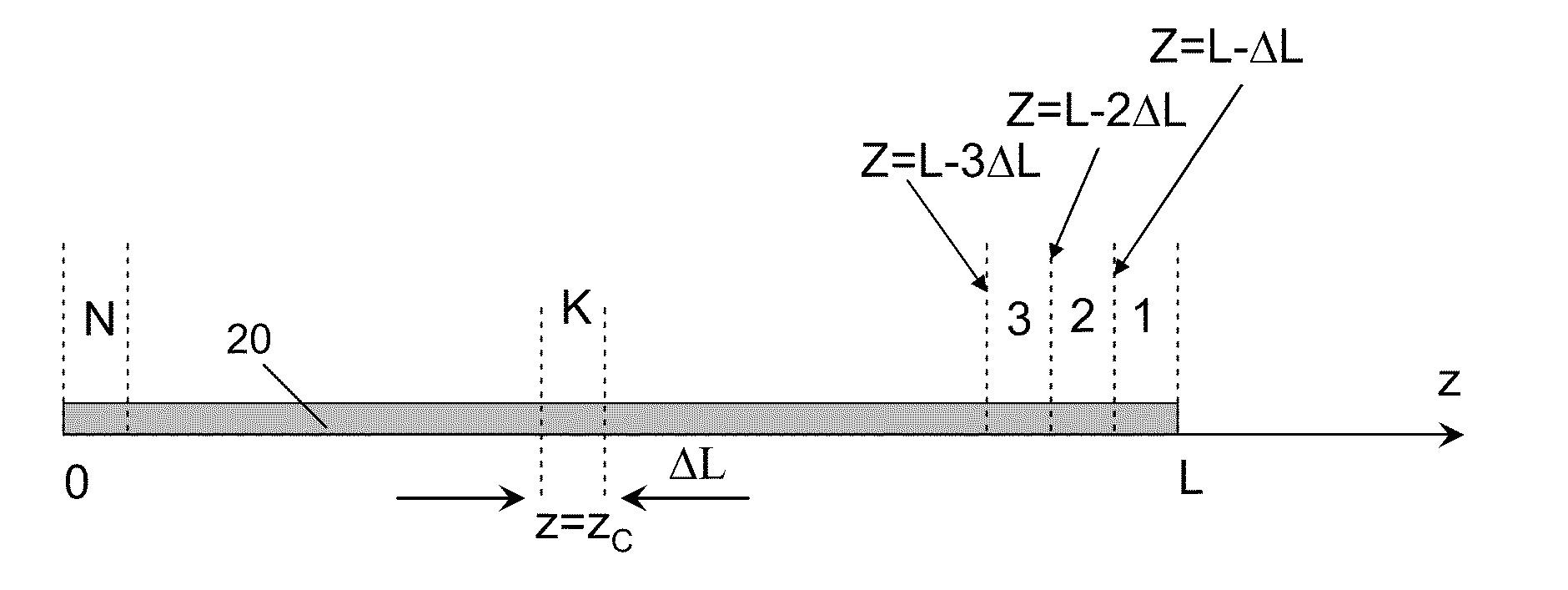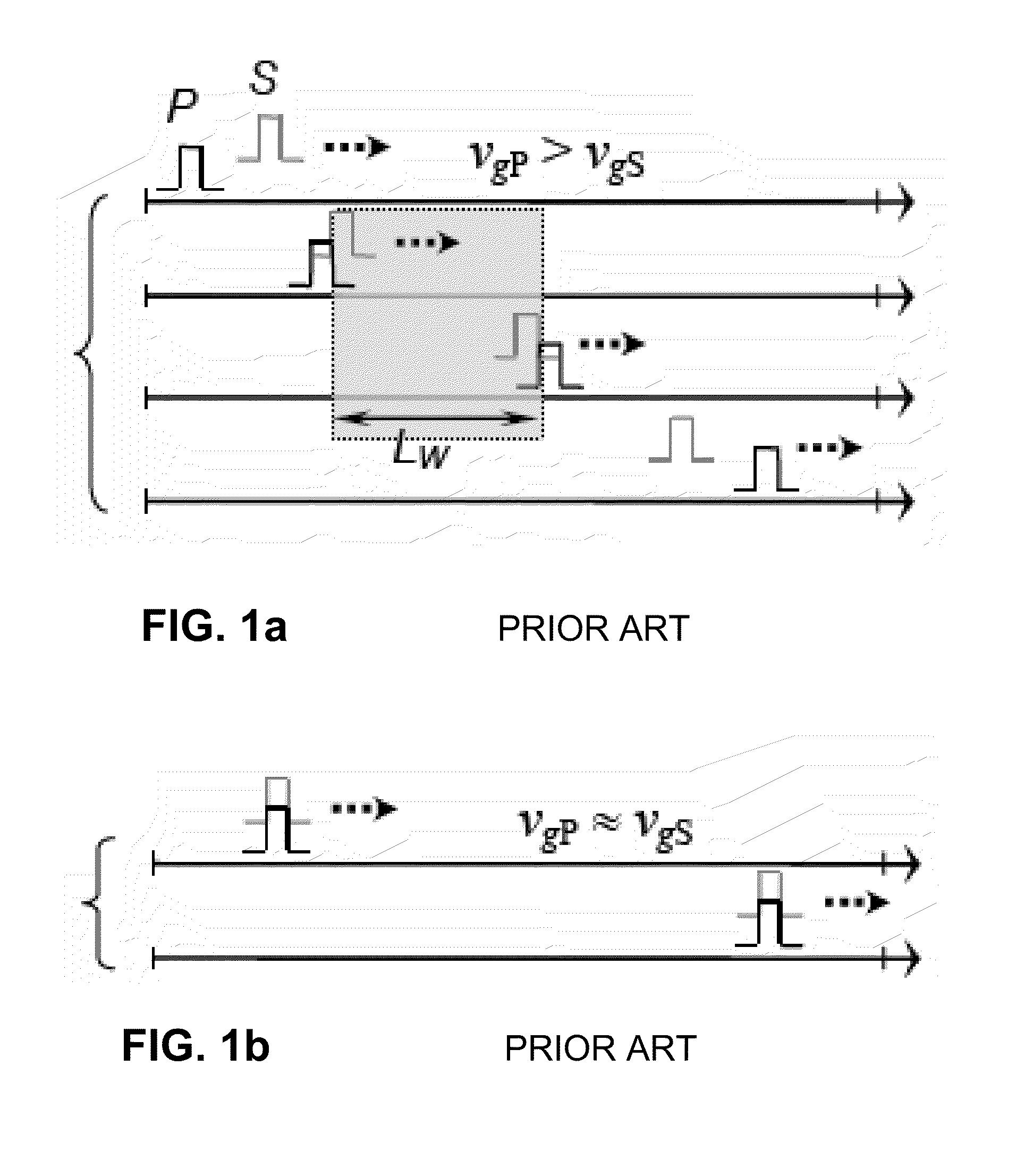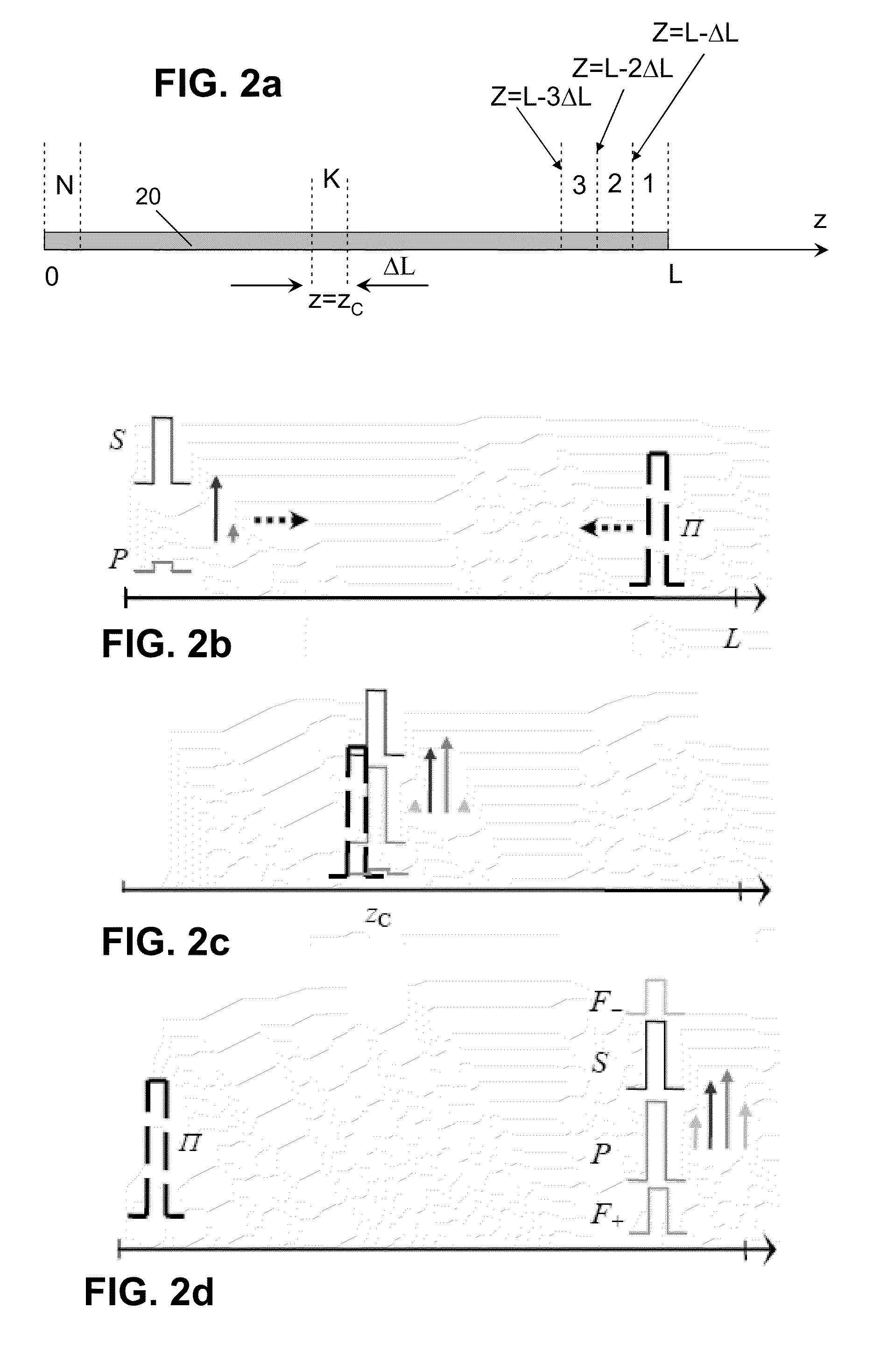Method for mapping of dispersion and other optical properties of optical waveguides
a technology of optical waveguides and optical properties, applied in the field of mapping of dispersion and other optical properties of optical waveguides, can solve the problems of reducing the sensitivity and spatial resolution of existing dispersion measurement techniques, identifying the fundamental obstacle to the construction of wideband parametric devices, and further tightening the fabrication process a difficult proposition
- Summary
- Abstract
- Description
- Claims
- Application Information
AI Technical Summary
Benefits of technology
Problems solved by technology
Method used
Image
Examples
example 1
[0082]The HNLF sample with mean ZDW (zero dispersion wavelength) of 1560.5 nm and deviation σλ0 less than 3 nm was scanned first in both directions by two co-propagating 10 ns pulses positioned at λ1=1558.23 nm and λ2=1530.23 nm and a counter-propagating 10 ns pump. FIGS. 18a and b illustrate the measured and converged (calculated) power profiles obtained by the algorithm, both relative to the collision position (zC), for the backward and forward scans, respectively. FIG. 18c provides a diagram of the general mathematical formulation used to determine dispersion. Although similar pulse powers were used in both directions, the measured power profiles are highly asymmetric with respect to the fiber directionality.
[0083]Periods of the oscillation of the Stokes sideband (100 vs. 50 m) are noticeably different, indicating that the ZDW of the last fiber section is closer to the probe wavelength λ1. The averaged Stokes product mean-squared deviation between the measured and calculated valu...
example 2
[0086]A modification of the experimental set-up was made before scanning a second fiber sample. The optical amplifier used to amplify the signal pulse was replaced by a custom-designed three-stage pre-amplifier to improve the measurement dynamic range. The modifications allowed the decrease in SBS gain to a lower value (<15 dB), while maintaining the measurement sensitivity. The power of the pump pulse remained constant during the propagation and the collision gain was more equalized along the fiber. The new configuration also allowed the powers of the probe and the signal pulse to be equalized and to eliminate the non-linear phase mismatch defined by Equation (9).
[0087]FIG. 21 illustrates the power profiles measured in both directions for a 175 m fiber sample with average SBS gain of only 12 dB (0>=1562 nm; Sλ=0.25 ps / nm2 / km). In this case, the period of spatial FPM oscillation differed by approximately 10 nm. The dispersion profiles were calculated using 13 harmonic-decomposition....
PUM
| Property | Measurement | Unit |
|---|---|---|
| walk-off distance | aaaaa | aaaaa |
| walk-off distance | aaaaa | aaaaa |
| frequency | aaaaa | aaaaa |
Abstract
Description
Claims
Application Information
 Login to View More
Login to View More - R&D
- Intellectual Property
- Life Sciences
- Materials
- Tech Scout
- Unparalleled Data Quality
- Higher Quality Content
- 60% Fewer Hallucinations
Browse by: Latest US Patents, China's latest patents, Technical Efficacy Thesaurus, Application Domain, Technology Topic, Popular Technical Reports.
© 2025 PatSnap. All rights reserved.Legal|Privacy policy|Modern Slavery Act Transparency Statement|Sitemap|About US| Contact US: help@patsnap.com



